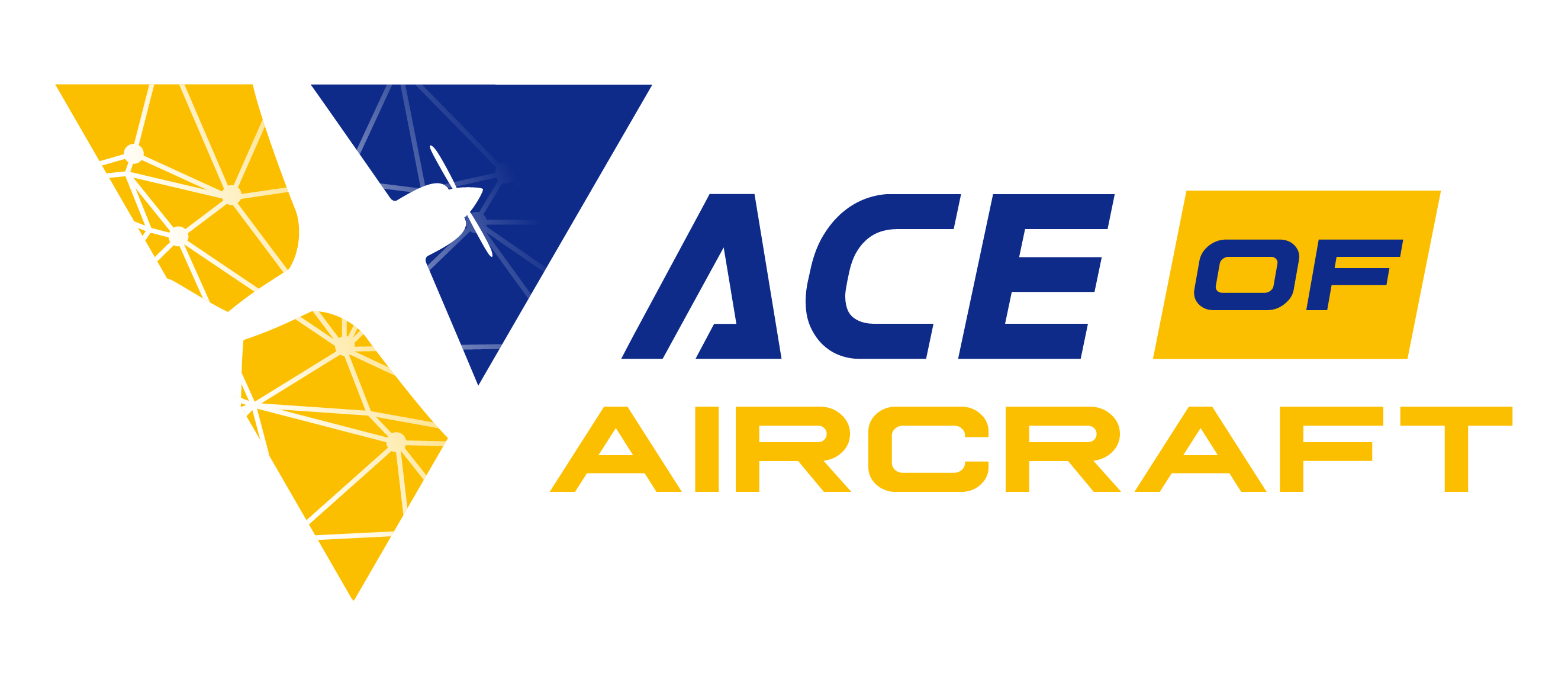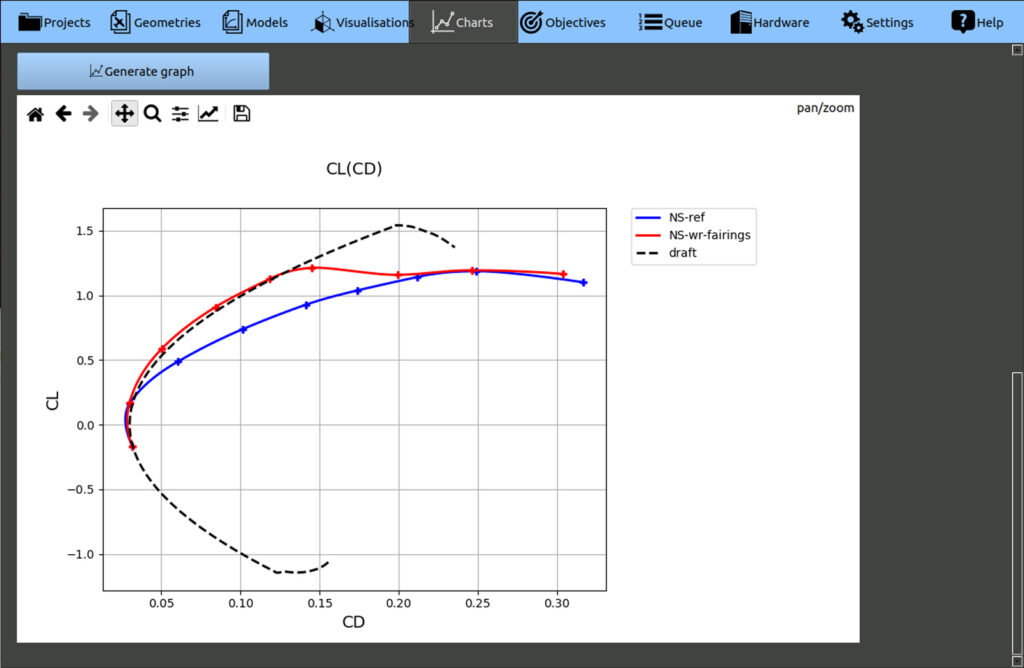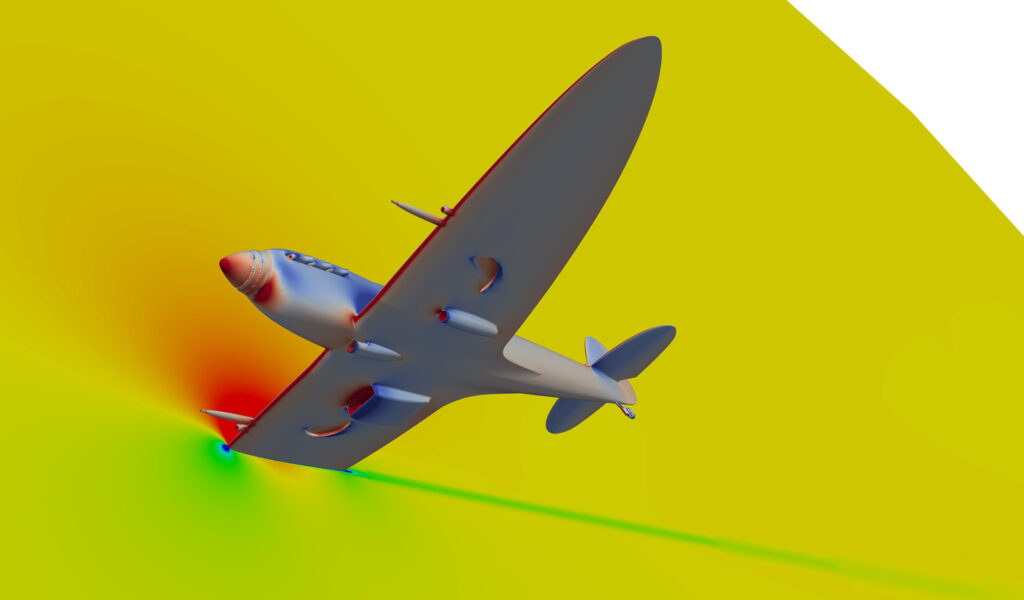Are you a small to mid-sized company in the general aviation sector?
Do you want to integrate CFD in your design office so that you can optimise the aerodynamic characteristics of your aircraft but want to avoid having to deploy excessive human and financial resources?
Our ACE of Aircraft software has been designed to meet your needs!
It has been developed specifically to respond to the constraints of businesses in the general aviation field and is guided by four key principles:
- Reasonable licence cost.
- Optimised computation runtime.
- No knowledge of fluid simulations required.
- Performance worthy of the best CFD software.
The result of two and a half years of development work and underpinned by a proven, practice-oriented methodology, ACE of Aircraft was designed and developed in collaboration with aircraft manufacturers who guided us throughout the entire development period by informing us of their expectations and needs.
ACE of Aircraft is available in various versions to adapt to your budget.
Contact us to find out more or to arrange a demonstration.
Enthusiasts, you can use this tool free of charge!
ACE of Aircraft is available with various licensing levels. The basic functionalities are available in the free version of the software. These functionalities will enable enthusiastic amateurs to perform aerodynamic simulations free of charge in their Windows environment.
Professionals, adopt a new approach!
Design offices of small to mid-sized companies are tempted to adopt a similarity-based approach to their aircraft development work: copying what has already proven its value in order to limit the risks of expensive pitfalls. With ACE of Aircraft, we propose a tool that will allow them to innovate and adopt an iterative approach that is closer to the one deployed by the major manufacturers. The key to making this possible is the ability to access robust simulation tools. Ordinarily, this would mean not only investing in expensive software but also recruiting numerical simulation specialists. With ACE of Aircraft, you can now integrate aerodynamic simulations into your design process at a reasonable cost and without having to recruit any specialists.
We have created a GUI that uses the language of aeronautic engineering and automatically runs CFD processes predefined by a computational engineer. ACE of Aircraft builds on highly regarded third-party software (AVL and OpenFOAM) for the performance of aerodynamic computations. However, there is no need for you to know how this software works in order to obtain results that you can use in your own developments.
The software is designed to allow you to construct libraries of geometries and models that you can select as your projects advance in order to understand the impact of every change you make and perform precise comparisons between solutions.
The software is also useful for companies and organisations in possession of a DOA because it permits rapid simulations of the impact of changes to the aerodynamic characteristics of equipment as of the time the CAD model becomes available.
An aid to learning:
ACE of Aircraft is the perfect tool for the practical demonstration of aerodynamic phenomena and for explaining how to model them within the framework of aeronautic projects. The software has been designed to allow teachers possessing a single fee-paying license to collect the work of multiple students and collectively run the Navier-Stokes simulations which they have prepared on their free versions.
Multiple levels of detail
ACE of Aircraft allows users to work at different levels of detail which corresponds to the main steps involved in the aerodynamic development of an aircraft :
- The “Draft” projects are based on an induced drag equation and Oswald coefficient in order to check that the preliminary dimensioning of the wings is correct with regard to the specifications.
- The “VLM” projects are based on modelling of the complete aircraft on the basis of rudimentary 3D designs. They make it possible to obtain rapid results and perform preliminary aerodynamic optimisation of the aircraft’s 3D architecture.
- The “NS-2D” projects are Navier-Stokes models that permit the precise simulation of flows around multi-profile surfaces. This makes them an ideal tool for optimising flaps and control surfaces.
- The “NS-3D” projects are Navier-Stokes models of the complete aircraft which not only validate the details of the aerodynamic architecture but also enable you to study the impact of the propellers and optimise the air intake and engine cooling scoops.
Functionalities
- 3 different modelling methods (induced drag with Oswald coef., Vortex lattice methods handled by AVL software and Navier-stokes models handled by OpenFOAM)
- Estimating all usual performance criteria (CLmax, L/D ratio, CDmin, max speed, stall speed, etc…)
- Modelling available-power: for fixed-pitch and constant-speed propellers
- Longitudinal/directional stability analysis and dynamic stability analysis
- Able to model commands along 5 predefined axes: pitch, yaw, roll, flaps and airbrake
- In Navier-Stokes simulations, modelling of the pressure and velocity gradients caused by heat exchangers or propellers
- Modelling tool for engine cooling
- 2D/3D visualisation tool with case-to-case comparison
- Chart drawing tool for all results produced by the software. Curve drawing for power, force repartition, aerodynamic moments, etc.
- Mission simulation tool and Pugh matrix tool
- Job manager and cluster manager for Navier-stokes computations
Contact







